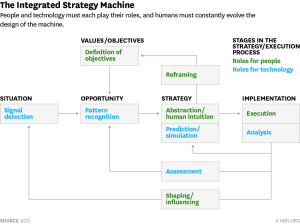This article from The Guardian is a long, but excellent read about the health impacts of sugar. However the story also examines something fascinating – how paradigms change in science:
In a 2015 paper titled Does Science Advance One Funeral at a Time?, a team of scholars at the National Bureau of Economic Research sought an empirical basis for a remark made by the physicist Max Planck: “A new scientific truth does not triumph by convincing its opponents and making them see the light, but rather because its opponents eventually die, and a new generation grows up that is familiar with it.”
The researchers identified more than 12,000 “elite” scientists from different fields. The criteria for elite status included funding, number of publications, and whether they were members of the National Academies of Science or the Institute of Medicine. Searching obituaries, the team found 452 who had died before retirement. They then looked to see what happened to the fields from which these celebrated scientists had unexpectedly departed, by analysing publishing patterns.
What they found confirmed the truth of Planck’s maxim. Junior researchers who had worked closely with the elite scientists, authoring papers with them, published less. At the same time, there was a marked increase in papers by newcomers to the field, who were less likely to cite the work of the deceased eminence. The articles by these newcomers were substantive and influential, attracting a high number of citations. They moved the whole field along.
In organisations – large or small, formal or informal – it’s easy to get caught in paradigms. New thinkers, young people and contrarians are essential in challenging accepted assumptions, and for the development of robust thinking that doesn’t fall into the trap of delivering the same outcomes.
Even when confronted with clear evidence that the paradigm is wrong, experts have trouble accepting this, and refute their own work, as evidenced by this other gem from the same article:
The National Heart, Lung and Blood Institute decided to go all in, commissioning the largest controlled trial of diets ever undertaken. As well as addressing the other half of the population, the Women’s Health Initiative was expected to obliterate any lingering doubts about the ill-effects of fat.
It did nothing of the sort. At the end of the trial, it was found that women on the low-fat diet were no less likely than the control group to contract cancer or heart disease. This caused much consternation. The study’s principal researcher, unwilling to accept the implications of his own findings, remarked: “We are scratching our heads over some of these results.” A consensus quickly formed that the study – meticulously planned, lavishly funded, overseen by impressively credentialed researchers – must have been so flawed as to be meaningless.
Just to emphasise this again: The study’s principal researcher was unwilling to accept the implications of his own findings.
This case study should make it into the leadership manual of every CEO when working with their strategy teams.
Source: The sugar conspiracy | Ian Leslie


